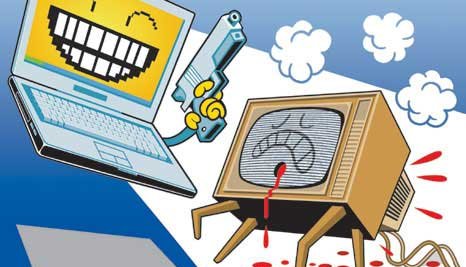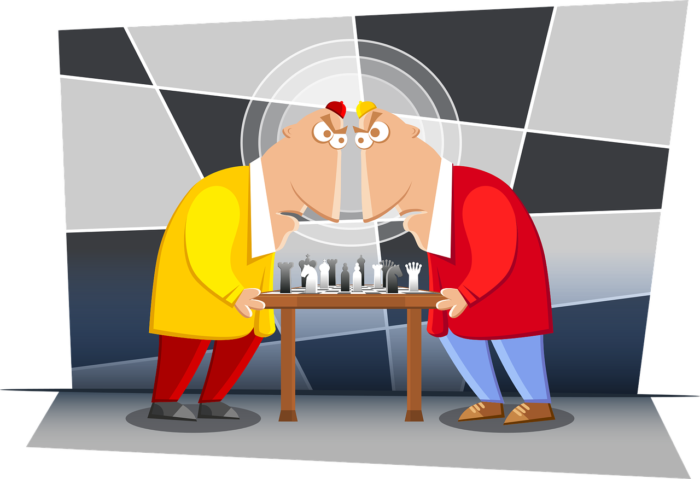Top 10 Mistakes Marketers Make When Hiring Agencies
- Not choosing the right time to outsource. Timing is essential,just like every other business decision one makes. It has to be chosen carefully and with a lot of attention. When confronted with the idea of outsourcing a service or some competencies, the company’s representative must take in account first if its the right time to make that certain decision at that time,for the company, and, at the same time, what concluded to that decision.
2. Spending too much time deciding if to make the move or not. While it is very important to make sure the timing is right spending too much time going back and forth on the decision wouldn’t do you any good. You must be decisive and confident on your choices.
3. Outsourcing the wrong activity / activities. If you hire someone outside of the office, you should give them the things they can do best. Always choose the best specialists or companies you can afford. Creating a company brand and marketing goals should be done inside your office, so make sure you discuss your culture code, style and requirements with the outsourced marketing partners before kicking off the project.
4. Having unrealistic ROI expectations. When you entrust the marketing or communication activities of your company, you should set some realistic expectations. One of the biggest mistakes of many companies is that they think outsourcing all their problems will solve them at once and there will be no need for them to participate in marketing decisions, activities and so on. Do not forget that brand awareness, a firm customer base and long-term faithful relationship with customers take time. Results don’t appear over night,it takes a lot of effort both at an external,but also internal level to reach your goals.
5. Forgetting that PR doesn’t sell per se. When looking for a PR partner outside your company make sure you first of all understand that PR doesn’t equal immediate sales. And no professional PR specialist will promise you that. That being said, a successful PR strategy will definitely affect your sales success indirectly through 3 factors: brand awareness & recall, credibility, as a secret marketing weapon.
6. Not doing the right research before the pitch. One of the most important steps is doing your research about the agencies you are interested in. A simple Google /Linkedin / Facebook search will not help you in taking the best decision of which agencies to call on the pitch or for a presentation. Instead try looking at their portfolio, at the case studies, at the awards the won, the services they provide, etc. Talk to their current clients. Read their reviews and their blog. See if the media was interested in them or not. Does their language vibe with you? Do their clients remind you of your company? Do they have documented results similar to the ones you want?

7. Asking more than 5 agencies in the pitch /presentation. If you know what you want from your agency, and you should, you don’t need more than 5 agencies briefed. You save both their time and yours and you are closer to choosing the right partner for your business. A good research will help you make the right choices.
8. Falling for shiny presentations. Make sure the very creative and crazy ideas presented to you, as beautiful and as interesting as they may sound or look like, are backed up by facts. The company or specialist you are hiring must be able to create and implement what presented to you. And most of all, bring results.
9. Letting the price be the main criteria. Choosing the most expensive agency doesn’t guarantee you the best results, but basing your decision firstly on the amount of money you pay for the collaboration will prove to be a bad call. Cheap will be cheap no matter how you look around it.
10. Not listening to your gut feeling. After years and years of experience, the instinct is very good and calibrated. We believe is very important to always have it with you and use it,when necessary.
The Virtual Promoter and why use it in your campaigns
Sometimes is hard to keep up with the technology at the level that is evolving, but by doing it you make sure your business stays in front of the pack and continues to gets more and more loyal customers. In this context, the retail industry has become one of the most competitive and dynamic areas of work, with brands literary fighting for the top stops in consumers’ minds.
It’s time for the agencies be even closer to their clients and help them reach their business goal. In retail, virtual mannequins have become an ideal, interactive display to inform customers, visitors and guests. The virtual mannequin can be you, a member of your staff or a hired actor. Virtual Mannequins create a ‘hologram model’ that enables stores and brands to display consistently powerful and engaging sales pitches, promotional and informational messages. Virtual promoter can be used in shopping malls, supermarkets, banks, airports, auto-dealerships, hotels, restaurants and a host of other areas.
efmp (European Field Marketing Partners)’s agencies in the Czech Republic, Germany and Romania are some of the few agencies in the world using this state of the art interactive 83” rear-projection media display platform, called the Virtual Promoter. This platform has been designed to produce a life-size display that interacts by gestures and hi-fi sound feedback.
“The interactive displays are aesthetically pleasing and effortlessly catch the attention of the passing consumers. The engaging nature of the displays makes consumers curious and encourages them to explore the technology; as a result every detail of the product is promoted. Whether it’s product information, special offers, services or long-term customer retention, there is no better way to capture the attention of the customers at the point of sale (POS); and the virtual promoters are always on duty,” wrote efmp on its blog.
Due to the novel way that virtual promoters display information, consumers are receptive to far more information. This is a great advantage for brands operating in a competitive environment. However, the benefits go beyond just engagement but also include the recording of in-depth customer metrics, with smart data giving brands insight into their target audience.
PPM Factum in the Czech Republic is one of only a few agencies in the world to use this progressive technology. They launched their virtual promoter (ViP) at the Retail Summit on 1st February 2016. According to its website, it is a device designed by the company Ameria, Germany, and is based on the motion capture. The Virtual Promoter (ViP) offers to show your advertisements or product range in a completely new and original way. By means of creative and entertaining application formats it is possible to communicate via the ViP much larger amount of information, moreover in a absolutely non-aggressive way, which is perceived very positively by customers.
“The essence of using this technology is to give brands a deeper understanding of how customers experience them in the retail environment, which in turn enhances their business intelligence and allows them to make strategic changes to implement cost savings and an increase in sales. It allows our agencies to translate their activities into data that shapes business decisions. Given the variety of campaigns delivered and the objectives for each, all agencies are able to create and report on bespoke metrics that are tailored to an individual brand’s needs. The ultimate objective is to optimize performance. A variety of platforms and tools are used to deliver campaigns; below we outline some of the outputs and benefits of this technology,” added efmp.
Some of the advantages for the business are:
Increase attractiveness of your business place. Attract attention to your shop.
Call to action. Process promotions & novelties and attract customers to your shop.
Information and navigation function. Offer information on your products including navigation through your business location.
An assistant support. Provide service outside your opening hours or unburden your sales assistants during peak hours.
Entertaining function. Offer your customers a pleasant use of time while waiting, kid´s corner.
CRM innovation.
Quality evaluation of promo event effectiveness based on accurate data.
Attracts attention of passersby by addressing them proactively.
Promo function is accomplished unobtrusively in the background by providing information or via an entertaining application.
“GIMMO Virtual Promoter” (ViP) is a device working on the principle of a projection on a glass coated with special foil. The glass can be placed in space or in a shop window. The device is equipped with the most advanced motion sensor that can recognize and contact passersby. It responds to gestures and sounds; creates an illusion of a real person. Moreover, still according to its website, almost 7 % of passersby stop and watch on average of 40 seconds, 2 % of passersby proactively test the device and spend on average 70 seconds on it. The device keeps customers´ attention much longer than any other type of media. Percentage of expressed interest is significantly higher than in other measurable media (internet).
The best media mix for your brand in 2017
The media market is changing under our eyes, each year bringing something new. It’s more than obvious that, even if you are representing a smaller brand, it’s not enough to rely on a website or social media page alone if you want to be competitive in the marketplace. Moreover, the media channels that used to work very good for you two or three years ago may very well not be the best ones to use anymore.
According to Initiative and their report Media Fact Book 2016, in Romania the TV continued to be in 2015 the rising engine of the media market, having a push of volumes of 7 percent compared to 2014 and reaching the EUR 212 million margin. Other channels that grew were the online (a boost of 12 percent and reaching EUR 57 million) and the radio (a 5 percent boost, until EUR 19 million). The OOH remained stable at EUR 28 million. Moreover, Initiative estimated that the media market would reach in 2016 EUR 351 million this year, following a 6 percent growth. The evolution on each channel is similar to the one in 2015 – the TV market will grow with 6 percent, the online with 12, the radio with 5, while the OOH will remain the same and the print would continue to drop still with 10 percent. In this context, the approaching of the digital next to the TV in the consumers’ preferences are, the amplitude that the mobile took, the influence of the multi-screening or the forever bigger importance of the content’s quality has over the rise of the media budgets.

source: Linkedin
With a well-chosen media mix, you can build the kind of name recognition and buzz for your company that isn’t possible with single-pronged approach. A mixture of owned, paid and earned media will help ensure your marketing efforts are reaching your target audience.
Consumers want brands that are useful and accessible, and most of all, entertaining. Marketers will continue to pull out all the stops to counter declining ad receptivity. In 2017, we’ll see more branded content and less regular advertising. Get ready for more native content, short and long form video, branded filters, and emoji and PR stunts. But it won’t end here. The specialists forsee that the marketers will forge ahead with new technologies such as 360 video, augmented reality, virtual reality and artificial intelligence (chatbots performing customer service and sales functions), making the landscape ripe for new creativity. Marketers will also closely monitor effectiveness as studies start to show which formats consumers find annoying and intrusive, particularly on mobile.
These advancements create new challenges for marketers. Far from a controlled consumer view of a brand (TV, outdoor, instore), marketers will face multiplatform, multi-device, in and out of walled gardens, all differently experienced by every consumer. Geotargeting will be seen as a commercial opportunity and Snapchat itself is using geofilters to let people know where to find a Snapbot vending booth. Brands will move quickly into customized/personalized creative content, delivered in a targeted way via programmatic buying. We will see more sequential content as marketers consider using retargeting for a more strategic and persuasive catenation of consumer messages.
In a media landscape of ongoing dramatic change, advertisers will more aggressively adopt multiple media alternatives to reach and connect with their audiences throughout 2017. Synergies will become more important than any single channel and the collective weight of all channels put together. Marketers will be focused on understanding the role each media plays within a broader plan and how they rub off to produce synergistic effects. The concept of synergies has been around for some time but what has changed is the planning aspect and the application of a discipline to the selection of channels to maximize its impact. Cross media studies conducted by Kantar Millward Brown show that globally 25% of media effectiveness has been attributed to synergies, and nearly 40% in APAC. These numbers are not only growing but increasingly we are seeing non-TV synergies emerging as advertisers and agencies start to get their heads around this. The two broad parameters needed to leverage synergies are – creative synchronization and media duplication and phasing.

source: Digital Land
„A “big idea” is important for creative synchronization to occur, but it’s also about adapting the message to the medium and following a common theme across a campaign. For example, it’s unlikely that a 30 second TV ad will work as well on YouTube or Facebook because these media have different characteristics. But they offer opportunities for forming different kinds of relationships that meet consumer needs at different times and occasions. Optimising media duplication and phasing can go a long way in driving synergies but as a first step, marketers will need to ensure that every medium has a role to play within the broader media mix. Roles will be in terms of driving ‘reach and or frequency’ or various aspects of how people think, feel and make decisions about the brand,” said Straford Rodrigues, Media & Digital Director, APAC at Kantar Millward Brown.
Therefore, every brand needs to create its media plan accordingly to its target, expectations and business plan. The strategy is more important than ever: setting clear objectives, finding the right opportunities, integrating your message and your true content, exploring, creating, producing and measuring.
Apart from the media planning itself, don’t forget the fact that the content is the KING and it needs to be as powerful, sincere and creative as possible.
- Not choosing the right time to outsource. Timing is essential,just like every other business decision one makes. It has to be chosen carefully and with a lot of attention. When confronted with the idea of outsourcing a service or some competencies, the company’s representative must take in account first if its the right time to make that certain decision at that time,for the company, and, at the same time, what concluded to that decision.












